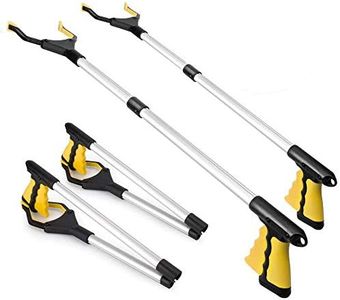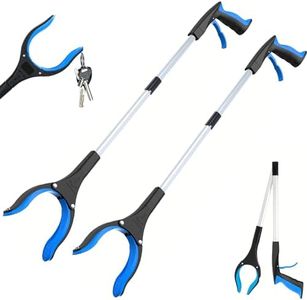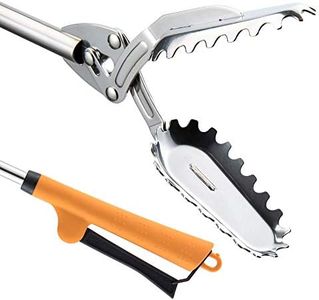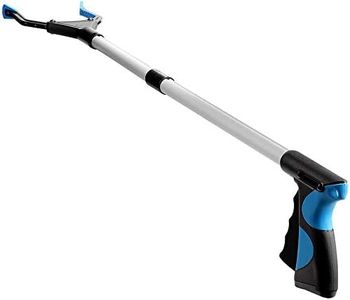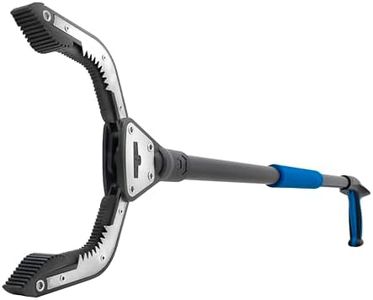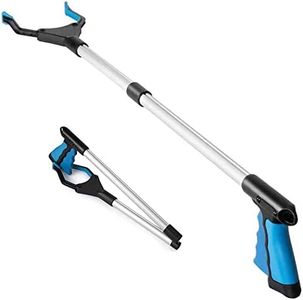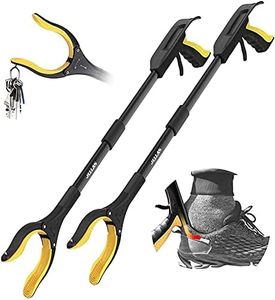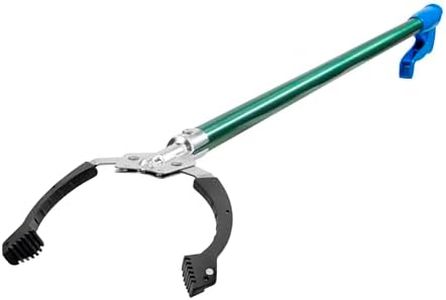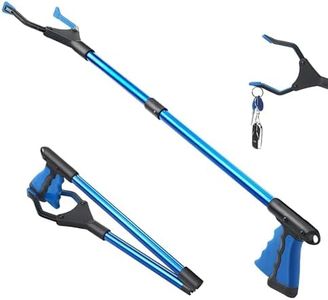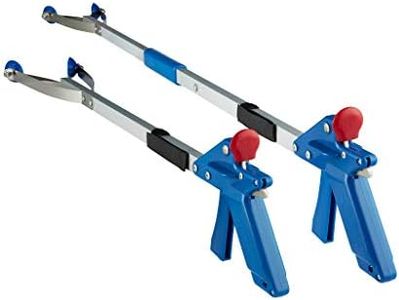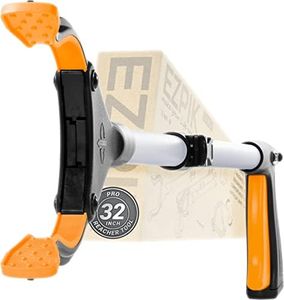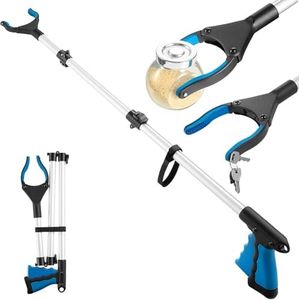We Use CookiesWe use cookies to enhance the security, performance,
functionality and for analytical and promotional activities. By continuing to browse this site you
are agreeing to our privacy policy
10 Best Reacher Grabbers
From leading brands and best sellers available on the web.Buying Guide for the Best Reacher Grabbers
When choosing a reacher-grabber (also called a grabber tool or reacher), the goal is to make daily tasks easier and safer by extending your reach without unnecessary stretching or bending. These tools are especially helpful for people with limited mobility, recovering from injury, or simply needing extra help picking things up from the floor, high shelves, or hard-to-reach spots. The right grabber should feel comfortable in your hand, be easy to use, and fit the types of tasks you face most often. Exploring a few key features can help you find the best match for your needs.LengthThe length of a reacher-grabber determines how far you can extend your reach. Shorter models (around 18–24 inches) are usually lighter and easier to control, making them great for grabbing items on tables or counters. Medium sizes (about 26–32 inches) offer a balance and can help with items on the floor or slightly elevated places. Longer options (up to 36 inches or more) maximize reach, often useful if you need to get things from high shelves or deep spaces, but can be harder to control for precise tasks. Choosing the right length comes down to where you need to use the reacher most—think about your usual tasks and the places you struggle to reach.
Grip & Handle DesignThe handle and grip affect how comfortable and easy the grabber is to use. Handles with ergonomic designs and soft, non-slip materials are more comfortable, especially if you have arthritis or reduced hand strength. Some handles are straight, while others have a trigger shape for fingers. If you find traditional grips hard to squeeze, look for models with larger, padded handles or ones that require less squeezing force. Think about your grip strength and how much time you’ll spend holding the tool—comfort is key for regular use.
Jaw Opening and TipThe jaw is the part that actually grabs items. The width of the jaw opening controls the size of things you can pick up, with narrow jaws better for small objects and wider jaws able to grasp bulkier things. Some jaws have rubberized or textured tips for a more secure hold, which helps prevent slipping. Rotating jaws add versatility, letting you pick up things from different angles. Consider the size and type of items you want to pick up most—small, slippery pieces might need a textured jaw, while larger, lightweight items need a wider opening.
Weight of the GrabberHow heavy the reacher itself is can impact comfort, especially during frequent or long use. Lightweight reachers are easier to manage and hold for longer periods, but might not be as sturdy with heavier items. Heavier models could be tiring, especially for people with limited arm strength, but may provide more stability. Pick a weight that feels comfortable in your hand and matches your strength—test if possible by simulating usage with basic household items.
Magnetic TipSome grabbers come with a small magnet in the tip, making it easy to pick up metal objects like keys, coins, or screws without needing to fully grip them. This feature is especially handy if you frequently drop or need to collect small metallic items. If your main use will be non-metallic objects, this feature may be less important.
Folding or Collapsible DesignFolding or collapsible grabbers are designed to be more portable and easier to store. They’re useful if you want to carry your tool in a bag or need to tuck it away when not in use. However, joints on folding models may not be as robust as single-piece designs. Think about where and how you plan to use your grabber—if you need it on the go, choose a folding version; if it’ll stay at home, a solid design may be more durable.
